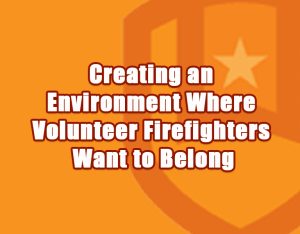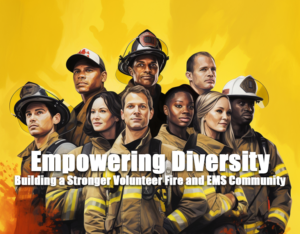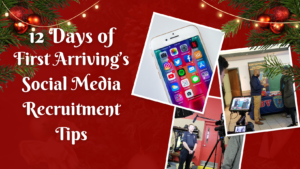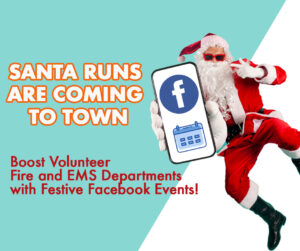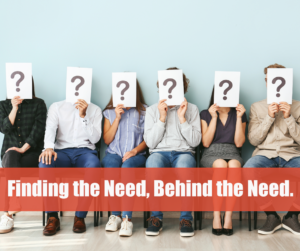Let’s say you’ve employed the latest and greatest SEO techniques to create a website for your company. Now that you’ve gotten your selling message in front of your prospective customers in the fire service, what do you suppose has to happen to turn those visits into leads and sales?
The most effective way we have found is to create a bond with potential customers, and we have established two ways that consistently produce results.
Emotion—The First Way to Create a Bond
This path requires some serious digging. By that, we mean you need to interview your management, staff, sales team and satisfied customers to learn everything you can about your brand. You need to understand its story from its inception and be able to put your finger on what we call your “Core Identity.” Just about every brand that’s been around for a while has a story to tell, whether it’s a product or a service. In a minute, we’ll explain how to tell that story in a way that will connect with prospective customers. But first, suppose it’s a new product—a fledgling brand.
In that case, we recommend an approach that’s been around a long time.t. It comes from Aristotle, who said that a speaker who is attempting to move people to thought or action must concern himself with pathos—in other words,. emotions. Aristotle believed, and we have come to agree, that if a speaker touches only their listeners’ minds, he is unlikely to move them to action. Aristotle also believed, and we agree, that true motivations lie deep in the realm of passions. Let’s be honest. Most of us use or manipulate facts to justify what our gut feelings tell us we want.
BlastMask, a company that produces a training regulator that attaches to face masks to simulate real-world SCBA breathing, is a prime example of a company creating a bond with its customers, both potential and current. The BlastMask team knew it was imperative to emphasize their product is made by firefighters for firefighters. This is quickly made apparent to users who visit their website or research the BlastMask. Through customer testimonials highlighted on BlastMask.com and shared across their social channels, there’s a clear relationship between the company’s team and users of the BlastMask. Potential customers can easily read the experiences of past customers and see that it’s not only a successful product but that the BlastMask team cares about the people who purchase their product.
The bottom line is this: to create a positive brand image, emotion needs to be the payoff of the communications.
Imagine you’re in a grocery store, in the produce department, and the assignment from your significant other or fire department crewmates is to bring back some apples. Which ones are you going to choose? The ones that look the best, right? Why do you suppose?
Think of an apple’s glistening red exterior as an emotion. It’s what people feel, see and react to when they choose one particular apple from the many on display even though the fruit under the skin, not the skin itself, is the real reason to buy the apple. The meat of the apple represents a product’s attributes—the logical rather than the emotional reasons to buy it.. But just as a Mercedes will look more appealing to many prospective car buyers than a Chevrolet, particularly if priced competitively, the shiniest red apple is the one most likely to be selected.
Emotion and identity are linked in a way that gives meaning, aura, mystique and value. For example, the core identity of the Commonwealth of Virginia as a travel destination is its wide variety of travel attractions, including mountains, beaches, historical sites and theme parks. So, “variety” might be the appropriate word to use in describing Virginia’s core identity with respect to travel. A long list of attractions gives people a logical reason to vacation there. If you were given the assignment to create a marketing campaign, you might wonder, “What emotion can be attached to that?”
Years ago, a team headed by David Martin, co-founder of The Martin Agency, came up with “Love,” which is perhaps the strongest human emotion there is, next to fear. The team reasoned that Virginia is for mountain lovers, Virginia is for beach lovers, Virginia is for history lovers, and Virginia is for theme park lovers. As they kicked that around, they had the bright idea to drop the adjectives, and that’s how “Virginia is for Lovers” came to be.
Emotion (love), logic (lots to do), and core identity (variety) were inextricably linked. That’s the underlying secret behind highly effective communications. It’s also what can create a compelling vision within an organization as the first step in getting everyone to bring that vision to reality.
Story—The Second Way to Create a Bond
As touched upon above, another way we have found to create a bond with customers is to tell the brand’s story. Every successful person, company, or brand typically has a story, and that story can be the goose that lays the golden eggs.
Let me explain.
When the veneer of a story is removed, almost all successful tales boil down to the same basic plot. It’s what we think of as “the essence of the universal story.”
Consider, for example, the story of Jack and beanstalk, or Dorothy and the Wizard of Oz. A sympathetic character—the hero—ventures from his or her “ordinary” world into a place unlike any he or she has ever known. Forces are encountered there that attempt to destroy the hero, but the hero perseveres. He or she pushes forward in what may seem a lost cause. Yet after a great struggle, and a dark moment when all seems lost, a decisive victory is won. The hero then returns home in possession of the elixir. Usually this takes the form of knowledge or newly acquired understanding that translates into power or opportunity the hero can share with the people of their community. For Dorothy it was the knowledge that, “There’s no place like home.” This story, dubbed the “hero’s adventure” by Joseph Campbell [1904-1987], creates a bond between the audience and the protagonist (in this case, your brand) because it is the story of each one of us. Life is a series of “hero’s adventures,” and nowhere is this more true than in the fire service. We all face challenges that take us out of our comfort zones. Remember when you left home to go to school, training, or your first job? You were embarking on a hero’s adventure that took you into the unknown. Eventually, you returned home, having faced the challenges, and likely were wiser than when you left.
What’s your brand’s story, or the emotional payoff it can bring? If you’d like us to help you put your finger on it, get in touch.



